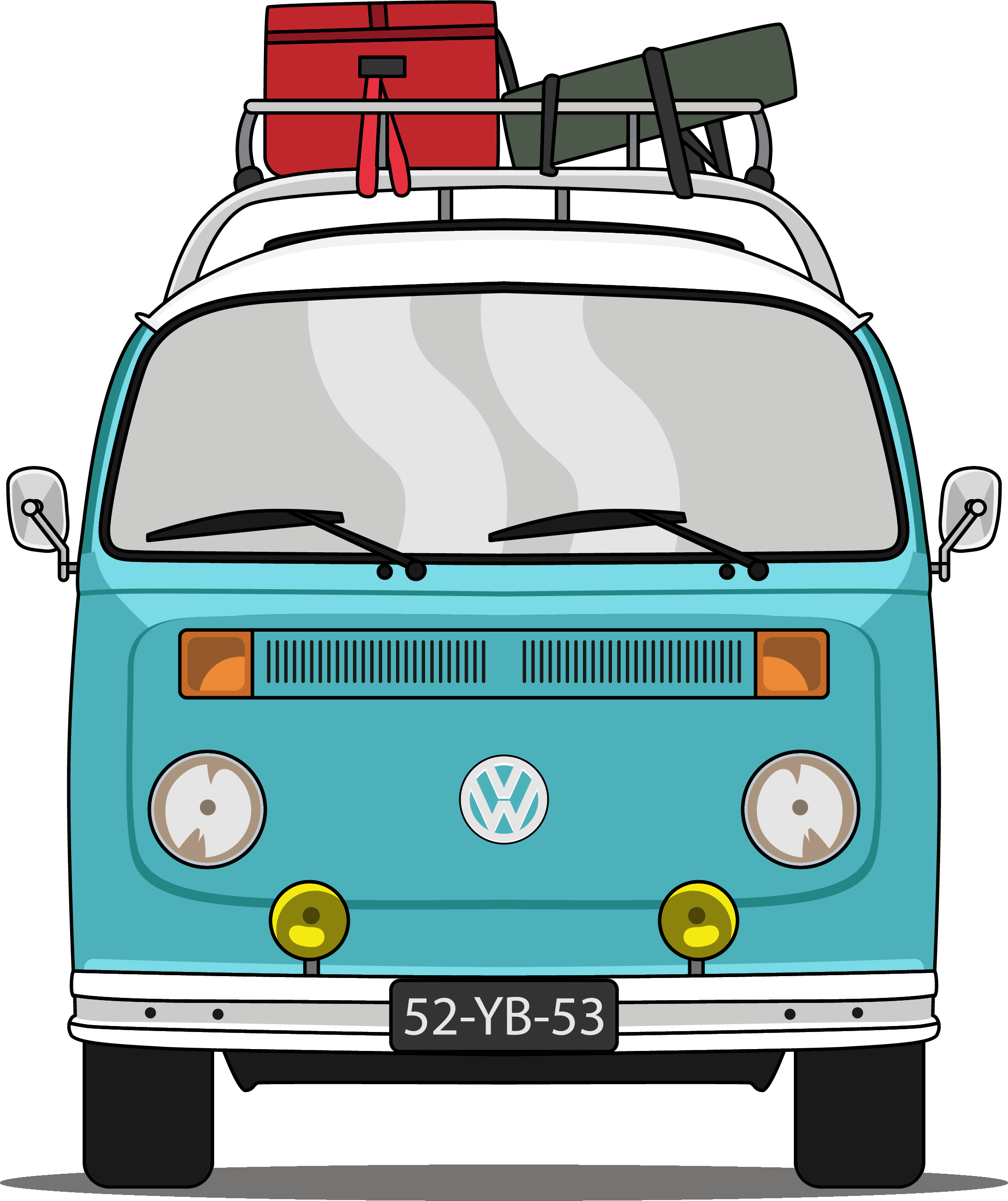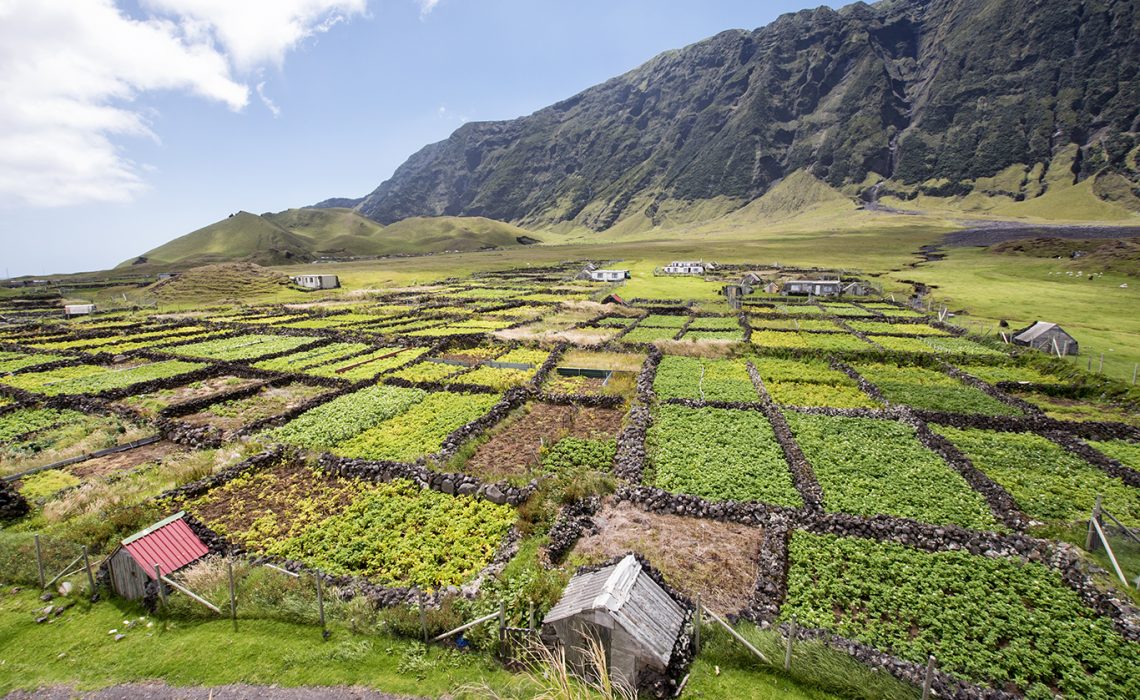“Welcome to the remotest place on earth, welcome to Tristan da Cunha” she says cheerfully and shakes my hand. We introduce ourselves and “Oh I know you, Milene!” she shouts and gives me a hug. Kelly is a young girl from England. A few years ago she fell in love with a Tristanian when she visited the island. She is now married, has a daughter and has lived on the island for a year. We spoke on Facebook before leaving.
Tristan da Cunha is the most remote inhabited place in the world, to the delight of its inhabitants. But not for Kelly, she likes it when a boat full of tourists comes. Nine times a year a freight or expedition ship comes along and a little more often a private sailing ship, but (almost) never the RMS St. Helena comes along with so many tourists. The island is then flooded, and some like that too much.
Conrad Glass. Photo: Milene van Arendonk
Like the only police officer on the island: Conrad Glass. He is a descendant of the very first inhabitant of the island ‘William Glass’ and has his hands full with the hordes of tourists. Although there is only one road on the island, it does have a fairly sharp bend. He must also check and stamp all passports. Not only the police but also the post office are busy. Here you can buy nice souvenirs that are also made by the local population. From hand-knitted sweaters to postcards with seabirds on them and stamps of island traditions (sheep shearing, potato paws) to crocheted penguins. Whatever you spend your money on here, it goes straight back to the population.
The Albatross pub. Photo: Milene van Arendonk
There is no airport here. Not a deep harbor either. To get ashore we had to go via a rope ladder that was attached to the ship. Then we came ashore with the help of a boat with fishermen. From the boat we could already see that Tristan da Cunha is little more than a 2060 meter high volcano surrounded by the great emptiness of the Atlantic Ocean. Edinburgh of the Seven Seas, also known as ‘The Settlement’, consists mainly of low buildings with red and blue corrugated iron roofs. There are also three churches and a pub: The Albatross. Inside, the resemblance to an English pub is striking. The English flag hangs prominently above the bar, some fishermen are already having a drink and the British news is read aloud on the TV in the corner.
On the way to the potato fields
We decide not to waste all our time drinking in the pub and start a short walk. We follow the three kilometer long ribbon of coarse gravel that leads through the peaceful landscape with the mountain on one side and the ocean on the other. Soon we come across the Hottentot Shelter. The name of the bus stop, a small van drives up and down to the potato patches, refers to the African soldiers who camped here in 1816. They had to stop any French who wanted to liberate the exiled French Emperor Napoleon on Saint Helena via Tristan.
The island has some crazy names, and on the way to the potato fields we encounter Mile Stone and Red Body Hill, we also heard about Ridge-Where-the-Goat-Jump-Off. Places with interesting stories, Kelly tells us later. The road ends at the potato fields. These fields consist of a bunch of fields surrounded by stone walls. Small houses can be seen here and there, some built of volcanic stones. We climb a steep hill to have a nice overview of the potatoes. “These are the best potatoes in the world,” says Joe, who spent 9 months on the island as a vet. Each family has its own way of fertilizing the potatoes. One does it with remnants of the lobsters that are caught and the other does it with sheep’s wool.“For the Tristanians, potatoes are a kind of insurance,” says Joe. “If the money loses its value, they will always have their potatoes” . Not only Joe loves the Tristan potatoes, the Saints (Saint-Helena) also love them and like to import them.
On the way to the potato patches. Photo: Milene van Arendonk
Shed at potato patches. Photo: Milene van Arendonk
The potato patches. Photo: Milene van Arendonk
Dutch blood on Tristan da Cunha
Once back in the Settlement, I meet up with Kelly. Kelly belongs to the ‘Green’ family. Green is the largest family on the island and consists of 33 men and 33 women. In addition, the family has a link with the Netherlands. Peter Groen was born in Katwijk in 1808 and was shipwrecked off the coast of Tristan da Cunha in 1836. He stayed there for the rest of his life, got married and eventually became spokesman / governor of the island. Groen changed his name to Peter Green and made himself useful, among other things, by rescuing drowning people. In the ‘News of the Day’ in 1897 he was even referred to as the ‘uncrowned king of Tristan da Cunha’.
Not a day without wind on Tristan da Cunha. So the laundry dries quickly but the line needs some help. Photo: Milene van Arendonk
Tristan’s internet cafe. More often closed than not. Photo: Milene van Arendonk
“Living on Tristan is like living in a bubble,” says Kelly. Your wallet will not be stolen here. You don’t see everyone posting photos on Instagram here. You will not see the latest films here immediately after they come out. You celebrate birthdays together here, and for a whole week. Very different from, for example, England. But she does not regret her adventure. On the contrary. “Everyone here cares about everyone, everyone helps each other, that’s the great thing about living on an island with only 250 people” .
After a few hours I leave the island again. I wave to Kelly and tell her we can keep in touch via Facebook. People here today live less isolated from the rest of the world because of the use of the internet. A day on Tristan da Cunha is of course far too short, but another special island awaits.


Hi, Tristan da Cuna is overgrazed, they should – or must! – plant kudzu for the animals if they don’t want them to starve at some point. Greetings and GOD bless from Canada.
The island is overgrazed, they should plant kudzu if they don’t want to animals to starve at some point.
Dit staat hoog op mijn lijst. Een ander interessant afgelegen eiland is Pitcairn, in de Grote Oceaan.
Dit staat hoog op mijn lijst. Een ander interessant afgelegen eiland is Pitcairn Island, in de Grote Oceaan.